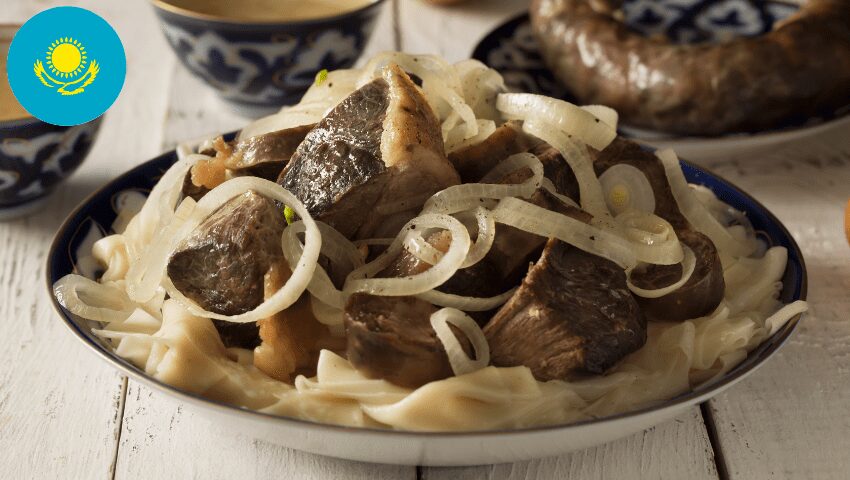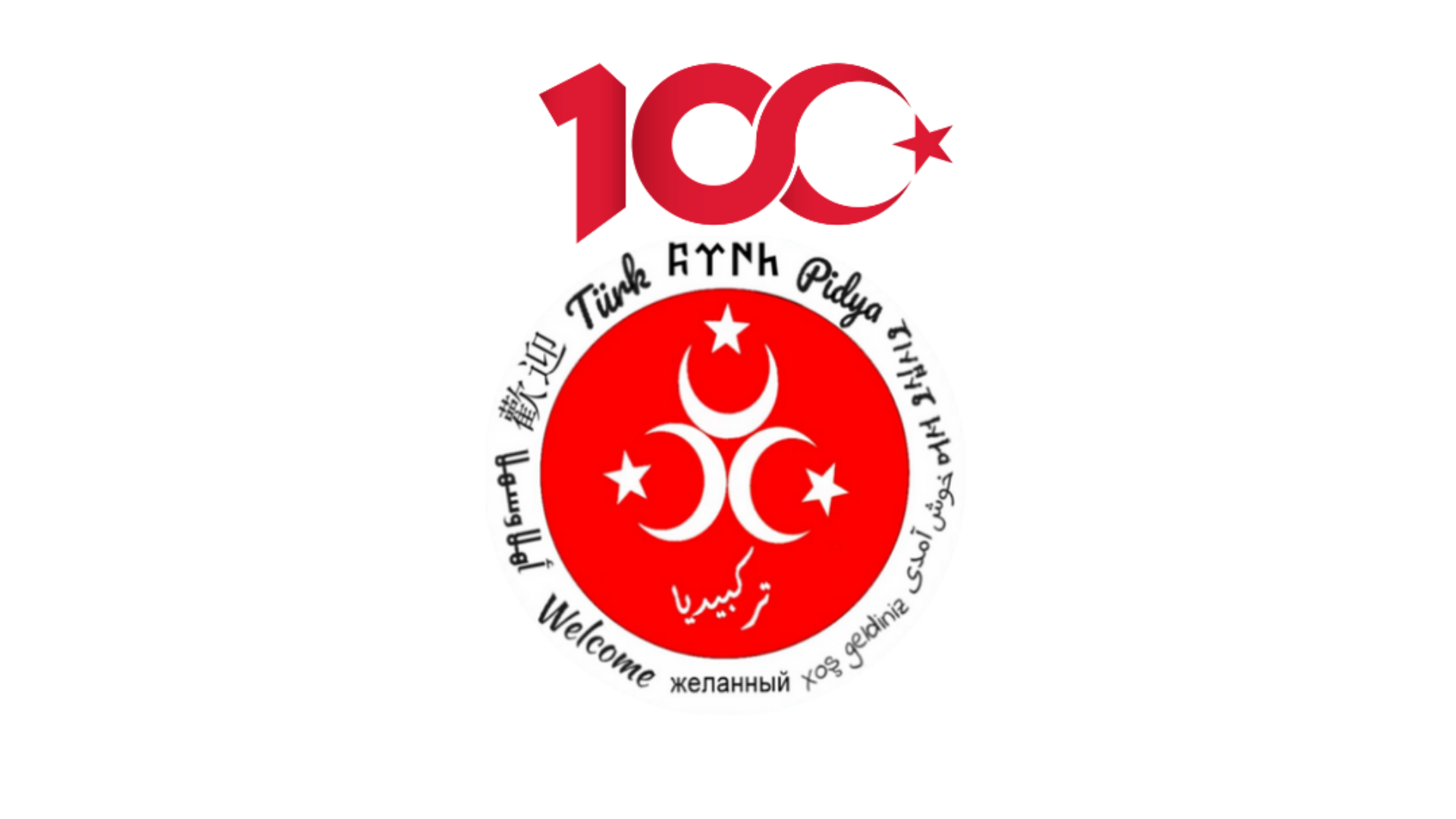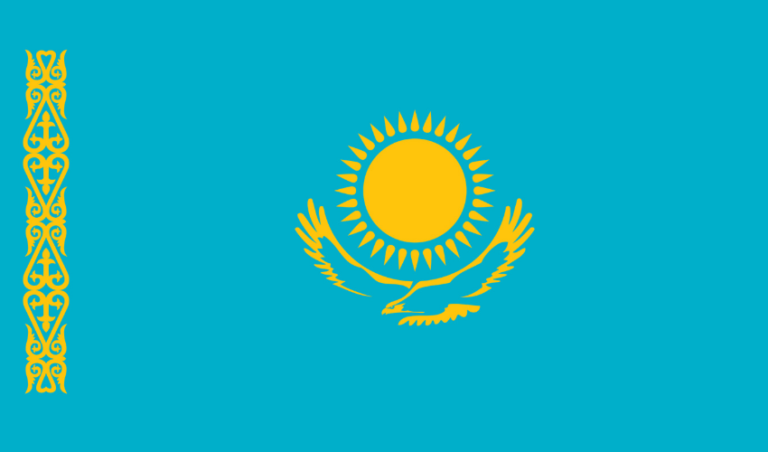Table of Contents
Forget everything you think you know about “exotic” food. Kazakh cuisine isn’t some fleeting trend for food bloggers looking for pretty photosit is pure survival, refined over thousands of years. To truly understand the endless steppes of Central Asia, you must take a seat at a Dastarkhan (the traditionally set table).
Here, it’s not about counting calories. It’s about hospitality so deeply rooted that it is considered sacred. When I was first invited into a yurt, I quickly learned two things: an empty plate is an unintended insult, and tea is never poured to the brim (this allows the host to refill your cup more oftena gesture of constant care). The cuisine is meatheavy, fermented, and incredibly filling. It tells the story of a people who were always on the move.

White Gold: The Milk of the Nomads
In the West, we are mostly familiar with cow’s milk. In the steppe, the spectrum is much broader. Dairy products here are both a staple food and medicine. Much like the historical trends in Turkish milk production, fermentation has always been vital in Kazakhstan to preserve milk in the nomadic heat.
1. Kurt: The Parmesan of the Steppe
Imagine extremely salty, rockhard, dried yogurt. That is Kurt. These small white balls are the ultimate “power food” for travelers. They don’t spoil, they don’t melt, and they provide an instant hit of salt and calcium. The taste is an acquired oneextremely sour and saltybut once you get used to it, it’s the perfect snack to accompany a cold drink. Similar to various regional cheeses, the hardness and salt content vary by region.
2. Shubat: The Creamy Giant
Shubat is fermented camel milk and a personal favorite among the more “adventurous” beverages. Unlike mare’s milk, Shubat is thicker, nearly as rich as cream (up to 6% fat), and snowwhite. The taste? Creamy and slightly tart, but much milder than you might expect. It is hailed as a remedy for digestion and is often served in large communal bowls.
3. Kumis: The Nomadic Champagne
This is where tourists usually find their limit. Kumis is fermented mare’s milk and it packs a punch. It is thinner than Shubat but contains natural carbonation and a bit of alcohol (usually 0.5% to 2.5%) due to the fermentation process. The flavor is sharp, fizzy, and often has a smoky note if it was prepared traditionally in smoked leather bags. Locals drink it by the liter; for beginners, I recommend starting with a small cup.
4. Shalap: The Ultimate Thirst Quencher
When the summer heat in Almaty becomes unbearable, reach for Shalap. It is essentially the “iced tea” of the steppe, but savory: a mixture of yogurt, water, and salt, sometimes seasoned with herbs. It hydrates better than plain water and replaces the salts lost through sweating. Simple, yet genius.
Daily Bread
5. Tandyr Nan: Sacred and Crunchy
No meal is complete without Nan. This bread is baked on the inner walls of a clay tandoor ovena technique familiar to those who have explored the culinary traditions of the Silk Road. The result is bread with a crispy edge and a soft center, often decorated with patterns and sprinkled with nigella seeds. Important: Never place Nan upside down on the tableit is considered bad luck.
6. Shelpek: The Friday Bread
Shelpek is more than just fried flatbread; it carries deep ritual significance. Traditionally, seven pieces are fried on Fridays (the holy day in Islam) to honor ancestors. The scent of the oil is said to reach the spirits of the deceased. It tastes best hot, straight from the pan, and is frequently shared with neighborsmuch like the communal spirit of food during the Ramadan season.
7. Baursak: Kazakh Donuts
These small, fried dough pillows are everywhere. Unlike Western donuts, they are usually not sweet, making them a versatile companion for both jam and meat. At weddings and festivals, they are piled high in mountains. A Dastarkhan without Baursak is simply incomplete.
Meat: The Substance of Life
8. Manti: The Giant Dumplings
Forget tiny ravioli. Kazakh Manti are roughly the size of a fist, steamed rather than boiled, and traditionally filled with chopped lamb and plenty of fat. In this climate, fat is a prized ingredient, not a waste product, as it provides essential flavor and juiciness. Often, pumpkin is added to the filling to create a subtle sweetness.
9. Plov: The Cauldron Feast
Plov is the ultimate communal dish in Central Asia. Rice, meat, yellow carrots, onions, and garlic are slowcooked in a massive castiron cauldron (Kazan). Every chef swears by their own secret recipesome add chickpeas, others raisins. It is heavy, savory, and incredibly satisfying. After a day of exploring Kazakhstan’s top shopping malls, a plate of Plov is exactly what you need.
10. Kuurdak: The “Waiting Snack”
Here is an insider tip: Kuurdak is often the dish you eat while waiting for the main course. Since an animal is often freshly slaughtered for large celebrations, the organ meats (liver, heart, kidneys) and scraps of meat are quickly sautéed with onions and potatoes. It is one of the oldest dishes of the steppefast, hot, and definitely for the brave of heart.
11. Beshbarmak: Five Fingers
This is it. The national dish. The name “Beshbarmak” literally translates to “Five Fingers” because it is traditionally eaten by hand. It consists of boiled meat (usually horse or lamb) served over thin, wide noodles and topped with a savory onion sauce (Tuzdyk). If the host offers you the sheep’s head, don’t be alarmed: it is the highest honor that can be bestowed upon a guest.
12. Kazy: The Horse Meat Delicacy
While it may be a taboo for some Westerners, horse meat is a prized delicacy in Kazakhstan. Kazy is a sausage made from the rib meat of the horse, stuffed into casings with its own fat, seasoned, and then dried or boiled. It is almost always served cold and sliced as part of an appetizer platter. The taste is intense, dark, and richa world away from industrial salami.







